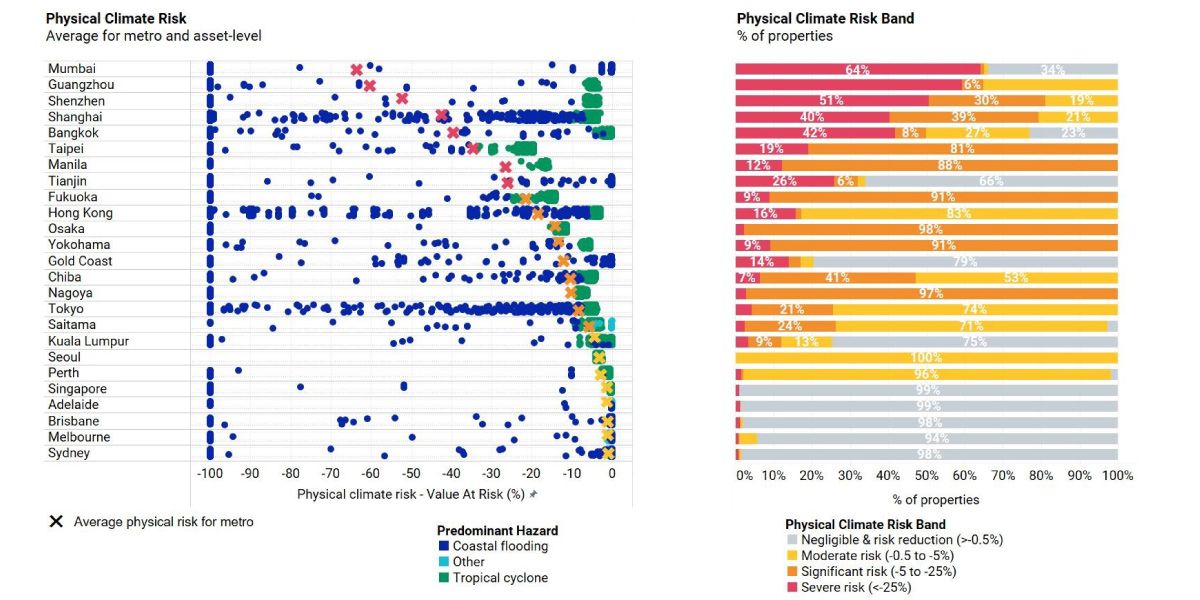Property Climate Risk Varied in Asia-Pacific
Applying climate analysis to MSCI's Real Capital Analytics database of global property holdings, we can see a broad range of aggregated physical climate risks across real estate in selected Asia-Pacific cities. As we previously showed for cities worldwide, these risks were not equally distributed within each city.
Once again, location and topography were decisive factors behind the impact of physical climate change, reinforcing the idea that investors may wish to consider climate risk at the individual asset level, rather than relying solely on market-level data.
Average physical risk vs. risk distribution across major Asia-Pacific metros

The physical-risk impact of an asset is quantified by assessing the exposure of a property to a hazard and computing the costs associated with that risk using vulnerability functions specific to the real estate market. Source: MSCI Real Capital Analytics database, MSCI Real Assets Climate Analysis
Subscribe todayto have insights delivered to your inbox.
Which Sectors Are Most Affected by Climate Risks?
Managing climate-change risks and capturing new opportunities can be crucial to protecting investments and optimizing performance while reaching sustainability goals.
Most Prevalent Climate Hazards Found in Asia-Pacific
Hazard data is a key component of MSCI ESG Research’s physical-risk modeling. The intensity and frequency of individual hazards strongly depend on the location of the asset and are projected to change over time depending on the underlying climate scenario.
Five Misconceptions About Climate-Change Risk in Real Estate
Because of real estate’s illiquidity, fixed locations, energy consumption and other characteristics, property portfolios may be particularly vulnerable to climate-change risks.
The content of this page is for informational purposes only and is intended for institutional professionals with the analytical resources and tools necessary to interpret any performance information. Nothing herein is intended to recommend any product, tool or service. For all references to laws, rules or regulations, please note that the information is provided “as is” and does not constitute legal advice or any binding interpretation. Any approach to comply with regulatory or policy initiatives should be discussed with your own legal counsel and/or the relevant competent authority, as needed.
